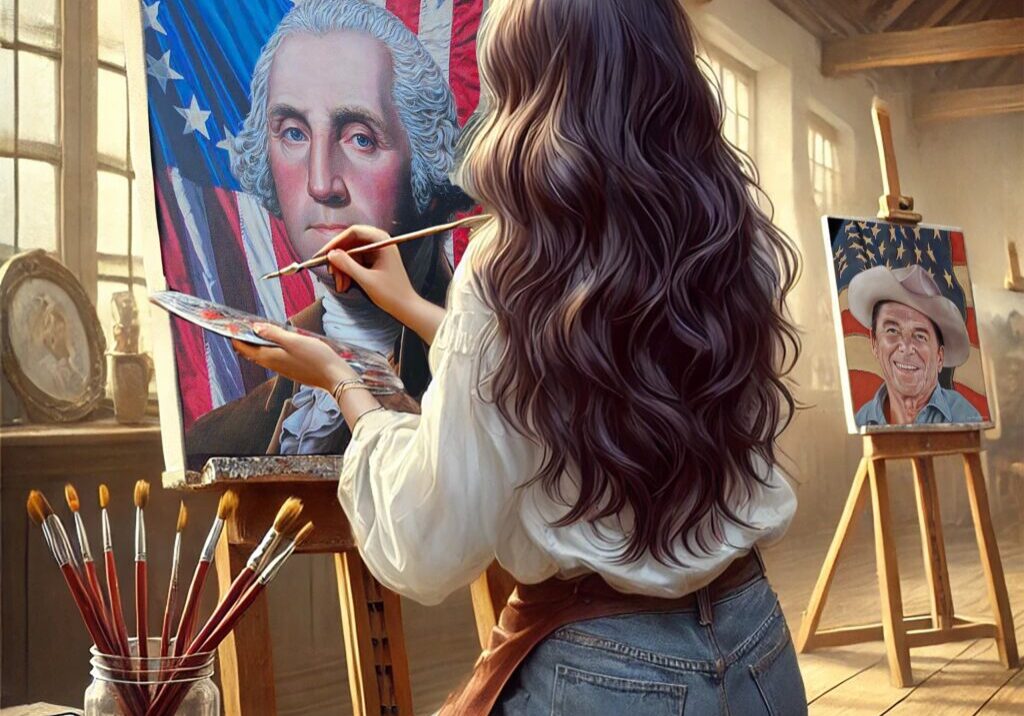
Ladies in Light: The Women Immortalized by American Portraiture
They do not shout or command, yet they remain unforgettable. In the portraits of the American colonial and Revolutionary period, women emerge not as warriors, but as anchors. Their power lies in presence, in posture, in the way they hold a gaze or a book or a child. When I painted the women in the mural, I thought often about how earlier artists gave them light. Not just literal illumination, but symbolic weight. These women stood at the edge of a revolution and helped carry it through. In the works of John Singleton Copley, Joseph Blackburn, and Charles Willson Peale, women appear composed and elegant. Their garments shimmer. Their expressions are deliberate. These paintings were not just tributes. They were social declarations. The sitter’s role, wealth, and intellect had to be made visible through fabric, setting, and bearing. In many of these portraits, the woman is framed in light. It softens the face, lifts the cheek, defines the lace at her collar. It tells you that she is not only seen but centered. One of my favorite examples is Copley’s portrait of Mercy Otis Warren. She sits not with flowers or embroidery but with papers. Her eyes meet yours with clarity. She was a writer, a political thinker, and a witness to the founding of the nation. Copley painted her with respect. No affectation. No flirtation. Just intelligence rendered in flesh and fabric. That balance of honesty and artistry remains one of the highest achievements of portraiture. In the mural, I placed women not just as symbols of motherhood or liberty, but as participants. Some cradle children, yes, but others distribute pamphlets, hold candles, or step forward in protest. Their bodies are angled toward action, not retreat. When painting their skin tones, I used thin glazes to let warmth rise from beneath. Their faces are not masked by powder. They are lit from within. I wanted the viewer to feel that these women were awake to history. The question of attire is always important in painting women of this era. Silk, muslin, velvet – each texture speaks. Each fold carries meaning. But for me, the more powerful detail lies in the hands. Many of these portraits show hands lightly clasped or resting on fabric. Others grip books, feathers, or fans. I used this same language in the mural. A hand resting on a protest banner. A hand tucked protectively around a child’s shoulder. A hand, quiet but firm, on the edge of a table where signatures change the world. What often strikes me about these portraits is how little overt emotion is displayed. The power is in restraint. Smiles are rare. Instead, the eyes carry purpose. Some women look past the viewer. Others meet you directly. That choice by the artist – how to place the gaze – is everything. It sets the tone. It tells you whether she is being shown or whether she is telling. In Revolutionary portraiture, women were rarely center stage, but they were never invisible. These portraits whispered strength. They carried intellectual presence in a time when their voices were often confined to letters or private rooms. The artists who painted them knew this. They gave their sitters grace, but also gravity. When I painted the women of the mural, I let their light spill outward. It catches along garments, passes across doorways, settles on nearby faces. It tells the viewer to pause. To look again. Because even in the margins of revolution, these women shaped its course. And art remembers them in light.

